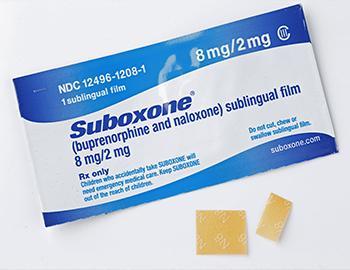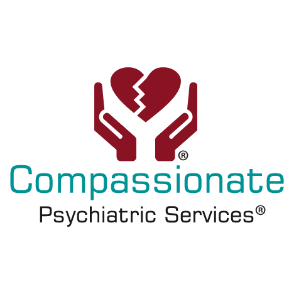
Suboxone®: Uses, Side Effects, and Interactions
SUBOXONE, a combination of Buprenorphine and naloxone sublingual tablet is used to treat opioid (narcotic) dependence or addiction. Buprenorphine and naloxone buccal film, sublingual film, or sublingual tablet is used for induction and maintenance treatment of opioid (narcotic) dependence.
When a narcotic medicine like opioid pain medication or heroine is used for a long time, it may become habit-forming, causing mental or physical dependence. Physical dependence may lead to withdrawal side effects if the narcotic is stopped suddenly.
Severe withdrawal side effects can usually be prevented when a person is switched to buprenorphine and naloxone combination. It acts on the central nervous system (CNS) to help prevent withdrawal side effects.
SUBOXONE revolutionized opioid maintenance treatment because it is less abusable than methadone, and therefore can be prescribed by physicians from their offices. The main ingredient in SUBOXONE is buprenorphine, a semisynthetic opioid that has been available as an injectable narcotic (brand name Buprenex) since 1981. Buprenorphine is a partial opioid agonist, meaning that it occupies the opiate receptors but doesn’t cause quite the same intensity of receptor activation (or “high”) as full opiate agonists such as oxycodone or methadone. The other ingredient in SUBOXONE is naloxone, which is an opiate blocker best known for emergency treatment of opioid overdose. SUBOXONE is composed of buprenorphine and naloxone in a ratio of 4:1.
Why you might ask, would you combine an opiate antagonist with an opiate agonist? This is a neat pharmacological trick to prevent SUBOXONE from being ground up and shot intravenously. When taken as directed (sublingually), the buprenorphine works, but naloxone is poorly absorbed through the buccal mucosa and has only a minimal effect. However, when the tablets are crushed up and injected, naloxone comes alive, preventing the high and causing immediate withdrawal symptoms in patients addicted to opiates. Methadone, on the other hand, can be injected and will deliver a potent high, making it far more prone to abuse and diversion than SUBOXONE.
This medicine is available only with your doctor’s prescription. Dr. Mohammed is licensed to prescribe SUBOXONE. Learn more about medication management.
Frequently Asked Questions (FAQ’s) on SUBOXONE
1. What is Suboxone
SUBOXONE is a medication used to help treat opioid addiction. SUBOXONE is part of a family of medications used in medication-assisted treatment (MAT) called “opioid antagonists,” which is the opposite of “opioid agonists” such as heroin, morphine, and oxycodone.
SUBOXONE will negate the effects of any opioid by preventing them from activating those pain receptors. This helps to manage cravings and reduce symptoms of withdrawal.
2. Is SUBOXONE addictive?
Since the early 2000s, addiction treatment specialists have preferred to prescribe SUBOXONE instead of its MAT predecessor, methadone. Because SUBOXONE was developed with the express intention of fighting opioid addiction, the medication was engineered to have a far lower risk of dependency than methadone.
Additionally, the side effects of SUBOXONE are usually less severe and tend to be physical instead of mental. When used as prescribed, SUBOXONE is effective. But, SUBOXONE like many drugs when abused, can be addictive.
3. Is SUBOXONE enough to cure opioid addiction?
Addiction is a chronic disorder that requires life-long treatment. SUBOXONE is only a part of that treatment plan. SUBOXONE, though, does not have to be part of the treatment plan for an extended time. SUBOXONE, under the care and supervision of an addiction-certified prescribing physician, can be tapered down over time. Medication-assisted treatment (MAT) in recovery is a part of a complete recovery plan which includes group therapy, individual therapy, family therapy, working with a sponsor, and working a recovery program, such as NA.
4. Does Suboxone Interact with other medications?
Like most medications, SUBOXONE can cause interactions. Therefore, you should always tell your physician what medications you are on before starting a SUBOXONE.
This medication can cause powerful effects when combined with other opioids such as oxycodone, codeine, hydrocodone, and heroin. It also causes negative effects when combined with alcohol. Those who are taking SUBOXONE should not take sleeping pills, narcotic painkillers, or sedatives, and should not drink alcohol. In regard to all other medications, please speak with your physician to determine what is safe and what is not.
5. Do you know which significant cities Compassionate Psychiatric Services offer its mental health services to?
Compassionate Psychiatric Services range from anxiety, depression, post-traumatic stress disorder (PTSD), addiction, trauma, eating disorders to numerous other mental health conditions and are offered to all our patients in the following city locations: Dallas, The Colony, Richardson, Flower Mound, Lewisville, Prosper, Irving and Arlington.

